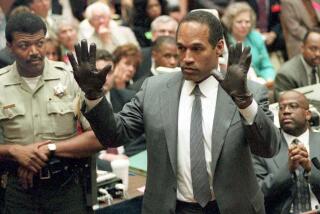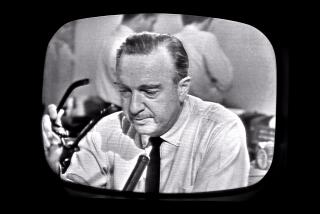TV News Trapped in the Space Between Life and Death
About 24 hours before Pope John Paul II died, when the news channels kept downgrading the popeâs condition but upgrading his proximity to God, Fox News Channel anchor Shepard Smith was maneuvering his way out of a gaffe, having prematurely announced that the pope was dead.
This was Friday, and you could understand Smithâs predicament: Once a news network begins to stare at an event, it tends to demand closure. And itâs usually around the time that closure wonât arrive that the coverage begins to dissemble.
We are talking about a news climate in which a âdeadlineâ clock was used to tick down the hours and minutes before the invasion of Iraq two years ago.
Until the announcement of the popeâs death, the cable networks threw on medical experts who described what was happening to him physiologically (infections had overtaken his body, leading to heart failure, kidney failure, loss of consciousness), and a parade of archbishops and other religious leaders spoke in spiritual metaphors about his condition, careful to refer to him in the present.
The pope, it was said, was âgetting closer to God.â âChrist [was] opening his doors.â âThe Lord [was] about to call him.â
Fox News, recovering from its mistake, went from âPope Not Deadâ to âPope Still Aliveâ to âPope Lost Consciousness.â
TV news hasnât so much framed two high-profile deaths in the last week as it has framed two high-profile dying processes, turning both into real-time spectator sports. One was a political circus that kept butting into family matters, the other a heavily ritualized ceremony being played out.
Whether the cameras were camped outside Terri Schiavoâs Florida hospice or trained on St. Peterâs Square, you tended to feel trapped in a waiting room of the airwaves.
You realized how rarely TV news puts you here -- that space between living and dying, where there is, finally, nothing to do but wait.
But graft a media swarm onto this mysterious experience and the absurdities kick in.
So Smith jumped the gun. Associated Press later quoted a Fox News representative as saying that a field producer, monitoring translations of Italian media, erroneously shouted that the pope had died, and it had gotten on the air through an open mike, leading to Smithâs premature announcement.
Unlike with Schiavo -- about whom the networks played pingpong with the question âShould she be allowed to die?â -- nobody disputed that the pope was running his own death, suffering and all, in what was described as a serene event, in a beautiful, historic square, with thousands outside bearing silent witness.
Nobody could rush in to question the manner in which a human being was going to expire. The pope had decided to die at home rather than at a hospital.
The announcement of the renowned pontiffâs death came several hours before the start of the NCAAâs Final Four on CBS. The game was televised as scheduled. And ABC and NBC, which had only Saturday afternoon programming to preempt, cut in with coverage.
From St. Peterâs Square, there was live footage of singing and praying, interspersed with retrospectives -- TV presenting an unequivocal portrait of a religious leader without having to get into the culture war that surrounded Schiavo.
As a TV event, the popeâs dying seemed like a beautiful, cathartic do-over of the spectacle of the Schiavo case, when to turn on the news was to run into a shouting match between people who had never known the woman but were emboldened to speak on her behalf.
Watching the Schiavo coverage made one feel complicit in the depersonalization of what is usually a private process, the public spectacle spurred in part by TV newsâ insatiable demand for conflict.
Her death, finally, felt like a relief, because it meant everyone would have to take their bullhorns and go home. By the time she expired, I had long since been turned off by the invasiveness of the televised coverage. It was easy to regard her as a body over which a family wrestled with varieties of grief, while outside, the crowds and the TV cameras applied their typical embrace.
More to Read
The complete guide to home viewing
Get Screen Gab for everything about the TV shows and streaming movies everyoneâs talking about.
You may occasionally receive promotional content from the Los Angeles Times.






